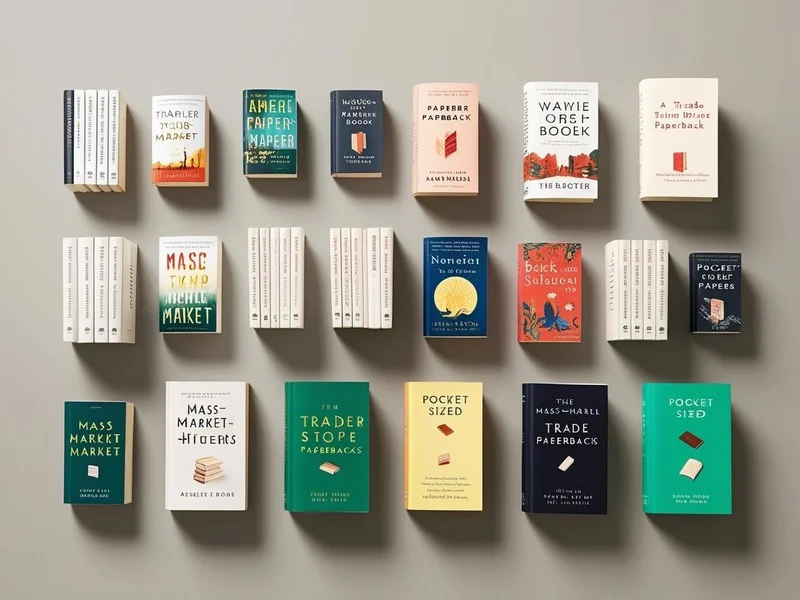A paperback book is a popular book format loved for its affordability and portability. This guide explains what a paperback is, its history, types, benefits, and how it compares to other formats. Whether you’re a reader, collector, or curious learner, you’ll find everything you need to know.
Table of Contents
ToggleWhat is a Paperback Book?
A paperback book has a soft, flexible cover made of paper or lightweight cardstock. Unlike hardcover books, paperbacks are cheaper and easier to carry. They’re often used for novels, non-fiction, and mass-market books. The term “paperback” comes from the paper-based cover, which contrasts with the rigid boards used in hardcovers.
Key Features of a Paperback
- Soft cover: Made of paper or cardstock, bends easily.
- Lightweight: Easy to carry in bags or pockets.
- Affordable: Costs less than hardcovers or e-books in some cases.
- Glue binding: Pages are glued, not sewn, to the spine.
History of Paperback Books
Paperbacks revolutionized reading in the 19th and 20th centuries. They made books accessible to more people. Here’s a brief timeline:
- 1800s: Cheap “dime novels” and “penny dreadfuls” used paper covers.
- 1935: Penguin Books launched affordable, quality paperbacks in the UK.
- 1939: Pocket Books brought paperbacks to the US, selling millions.
- Today: Paperbacks dominate fiction and mass-market publishing.
Types of Paperback Books
Not all paperbacks are the same. Publishers produce different types to suit various markets.
Mass-Market Paperbacks
These are small, inexpensive books sold in bookstores, airports, and supermarkets. They’re often genre fiction like romance, mystery, or sci-fi.
Trade Paperbacks
Larger and higher quality than mass-market, trade paperbacks are used for literary fiction, non-fiction, and memoirs. They’re pricier but still cheaper than hardcovers.
Digest Paperbacks
These are mid-sized, often used for magazines or special editions. They’re less common today.
Paperback vs. Hardcover: What’s the Difference?
Paperbacks and hardcovers serve different purposes. Here’s how they compare:
| Feature | Paperback | Hardcover |
| Cost | Cheaper ($5-$15) | More expensive ($20-$40) |
| Durability | Less durable, wears easily | Very durable, long-lasting |
| Weight | Light, portable | Heavier, bulkier |
| Release | Often released after hardcover | Released first |
Benefits of Paperback Books
Paperbacks are popular for good reasons. Here are their top advantages:
- Cost-effective: Affordable for students, casual readers, and collectors.
- Portable: Fits in bags, making them great for travel or commuting.
- Wide availability: Found in bookstores, libraries, and online.
- Collectible: Special editions or signed copies can be valuable.
Are Paperbacks Better Than E-Books?
Paperbacks and e-books both have fans. Here’s a quick comparison:
- Paperbacks: Tangible, no battery needed, great for gifting.
- E-books: Instant access, adjustable text size, store thousands on one device.
Choose paperback books if you love the feel of pages or want to display books. Choose e-books for convenience and space-saving. Explore book printing services.
Common Questions About Paperback Books
Here are answers to questions people often ask, inspired by Google’s “People Also Ask”:
Why Are Paperbacks Cheaper Than Hardcovers?
Paperbacks use less expensive materials like paper covers and glue binding. This cuts production costs, making them affordable.
Are Paperbacks Less Durable?
Yes, paperbacks wear out faster than hardcovers. Their covers bend, and pages may tear with heavy use.
Can Paperbacks Be Collectible?
Absolutely! Rare, signed, or first-edition paperbacks can be valuable to collectors.
How to Care for Your Paperback Books
Keep your paperbacks in good shape with these tips:
- Store upright: Use a bookshelf to prevent spine damage.
- Avoid moisture: Keep books in a dry place to prevent mold.
- Use bookmarks: Don’t fold pages; it weakens the spine.
- Handle gently: Open books carefully to avoid creasing.
Conclusion
Paperback books are affordable, portable, and widely loved. They come in different types, from mass-market to trade, and offer unique benefits compared to hardcovers and e-books. Whether you’re a casual reader or a collector, paperbacks are a fantastic choice. Use this guide to understand their value and care for your collection.
Ready to start reading? Check out our top paperback book recommendations.







